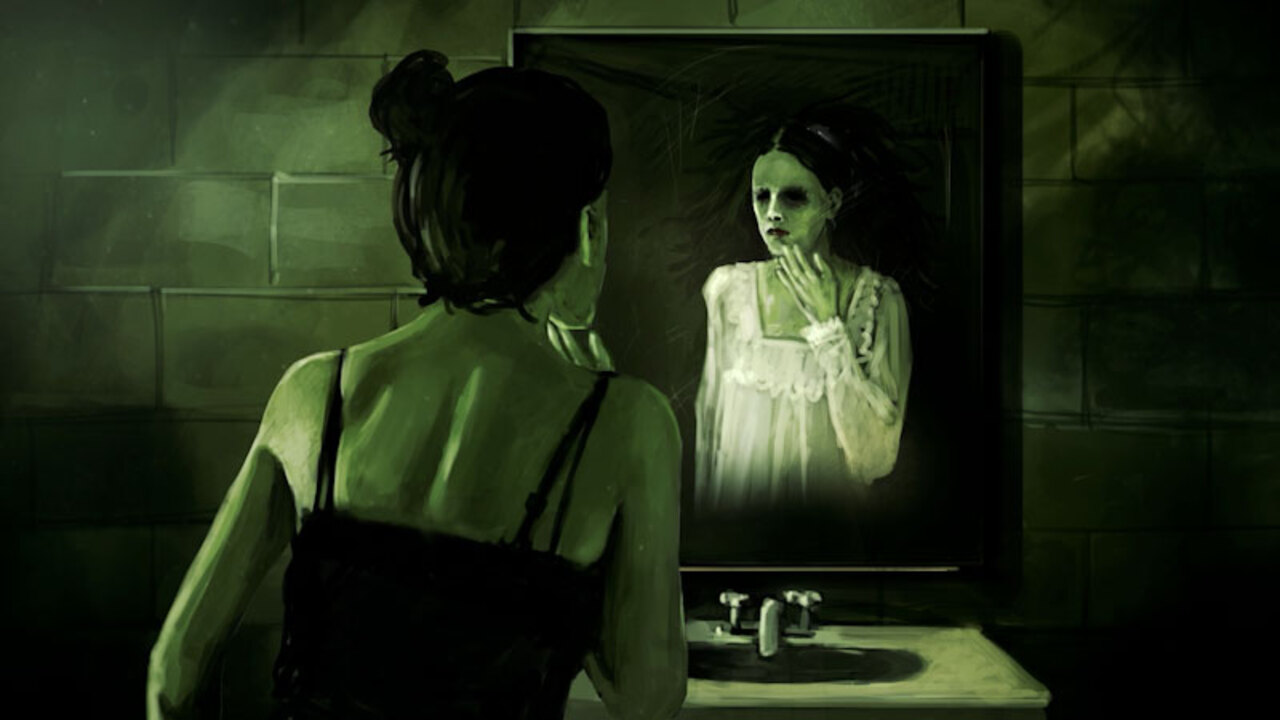
when Horror Yearbook – Bloody Mary is one of the most chilling urban legends known around the world. The story tells of a mysterious woman named Mary who appears when her name is called three times in front of a mirror. Often performed in dimly lit bathrooms, this ritual has become a daring challenge among teenagers. Participants stand silently before a mirror, usually with a candle in hand, and summon Bloody Mary. The legend claims that her blood-covered figure will emerge, haunting those who call her. While the tale has been retold in many variations, the core remains: a woman from another realm staring back through the glass. Children and teenagers have repeated this tale for decades, using it as a test of courage during sleepovers and late-night gatherings. Despite skepticism, the fear surrounding this ritual has remained strong in popular culture.
Bloody Mary may be rooted in different folk stories across various cultures. One early version speaks of a woman named Mary Worth, believed to have been executed during the 17th century for practicing witchcraft. According to this tale, her restless spirit remained bound to the mirror realm, forever seeking revenge. This story, like many others, morphed over time into a cautionary tale about vanity, sorcery, and revenge. In some cultures, Bloody Mary is linked to historical figures like Queen Mary I of England, who was nicknamed Bloody Mary due to her persecution of Protestants. However, the modern mirror ritual appears to have evolved separately. The image of a red-haired woman drenched in blood became popular in later interpretations. These origin stories added layers of mystery to the urban legend. Bloody Mary transformed from a historical figure or accused witch into a supernatural icon. The blend of history and myth gave the tale its power and longevity.
“Read about: Unveiled Secrets of Solomon’s Quarries: A Mysterious Underground World Under Jerusalem”
Over the years, the Bloody Mary ritual has become more than just a story. It turned into a rite of passage for many young people. Teenagers often challenge each other to perform the ritual, daring one another to face what lies behind the mirror. The typical setup involves a dark bathroom, a single candle, and a steady voice calling out her name. After the third chant, believers say Bloody Mary appears in the mirror, glaring with fury or even reaching through the glass. Some claim to see blood, scratches, or hear whispers. Whether imagined or real, the experience often leaves participants frightened. This modern tradition of courage-testing has been passed down through generations. Even those who do not believe find themselves hesitating in front of the mirror. The ritual’s popularity continues to grow through social media videos, horror games, and viral challenges. Bloody Mary is more than a myth; she is a cultural phenomenon.
The impact of the Bloody Mary myth can be seen across various media. Horror movies, novels, and television shows have drawn inspiration from her story. In 2005, a horror film titled Bloody Mary brought her terrifying image to the big screen. Other adaptations include references in supernatural series and Halloween episodes. Writers and artists have used the legend to explore themes of fear, guilt, and curiosity. The imagery of a woman trapped in a mirror resonates deeply with audiences, making her an iconic figure in horror folklore. Bloody Mary has also appeared in comic books and video games, further solidifying her place in modern storytelling. These portrayals help keep the legend alive, introducing it to new generations. Her story has become a canvas for creative expression, each version adding new elements to the original myth. Whether viewed as entertainment or a warning, Bloody Mary continues to haunt the imagination of millions.
Despite the fear and fascination, science offers possible explanations for the Bloody Mary phenomenon. Experts suggest that staring into a mirror in low light for extended periods can trigger hallucinations. This effect, called the Troxler effect, causes the brain to distort images and fill in gaps, leading to eerie visual distortions. When combined with fear and anticipation, the mind may create the illusion of a ghostly figure. Psychologists argue that belief in the legend plays a major role in what people think they see. The power of suggestion, especially in group settings, can amplify emotions and sensations. Some also experience mirror illusions due to eye fatigue or sensory deprivation. While the supernatural element remains unproven, the psychological impact is real. Bloody Mary may not be a ghost, but her story continues to influence behavior and imagination. The legend thrives on fear and mystery, fueled by both cultural tradition and human psychology.